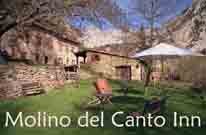Black Redstart
In these early days of autumn, is seen primarily as migratory birds continue their journey southward towards Africa. It's curious to think as there are birds that are still with us, in our fields and cities, eating insects and in a few weeks will be catching flies between Lions and Giraffes.Good time also to see how it evolves the plumage of birds, including many species are slowly changing their juvenile plumage to plumage with which they will spend their first winter, similar to adults.
Juvenile Bullfinch
For all this, always enjoyed watching birds and we liked show the birds of Las Merindades, a region with different habitats within a few kilometers, where there are a rich fauna and flora.After seeing a few small birds between fruit and Valley towns Zamanzas, among which highlighted a compound family group by 10 birds of Bullfinch.
The region of Bricia and Embalse del Ebro water reservoir, we had interesting records, in the latter with a good numbers of waterfowl, mainly Ducks and Coots, also highlighting the presence of Grey Heron and Great Egret, while the fields are constantly prospected by Common Buzzards and Common Kestrels and one Short-toed Eagle, which delighted us with some of its successful hunting moments. Stonechats, Whinchats, Wheatears, Linnets, Buntings, Redstarts ... are the most representative of small birds. As always striking, and interesting the record of Little Owl and Southern Grey Shrike.
Common Snipe
One more time a good birding day with 47 species recorded.
Bird List
Gadwall
Mallard
Red-crested Pochard
Great Cormorant
Great White Egret
Grey Heron
Griffon Vulture
Short-toed Eagle
Griffon Vulture
Short-toed Eagle
Common Buzzard
Common Kestrel
Common Coot
Coomon Snipe
Greenshank
Common Sandpiper
Common Coot
Coomon Snipe
Greenshank
Common Sandpiper
Yellow-legged Gull
Wood Pigeon
Little Owl
Great Spotted Woodpecker
Wood Lark
Sky Lark
Wood Pigeon
Little Owl
Great Spotted Woodpecker
Wood Lark
Sky Lark
Grey Wagtail
Dipper
Robin
Dunnock
Black Redstart
Common Redstart
Dipper
Robin
Dunnock
Black Redstart
Common Redstart
Whinchat
Common Stonechat
Common Stonechat
Wheatear
Blackbird
Blackcap
Blackbird
Blackcap
Spotted Flycatcher
Blue Tit
Blue Tit
Great Tit
Southern Grey Shrike
Jay
Magpie
Southern Grey Shrike
Jay
Magpie
Carrion Crow
Spotless Starling
House Sparrow
Common Chaffinch
Spotless Starling
House Sparrow
Common Chaffinch
Linnet
Goldfinch
Goldfinch
Bullfinch
Yellowhammer
Cirl Bunting
Thanks to Janet and Reinhard for your interest in the birds of Burgos
More information and www.molinodelcanto.com and www.mcbirding.com
























































